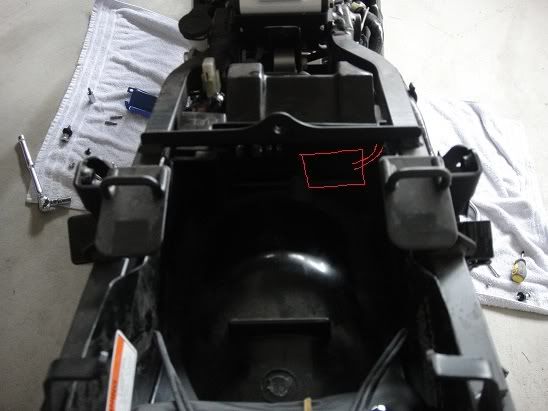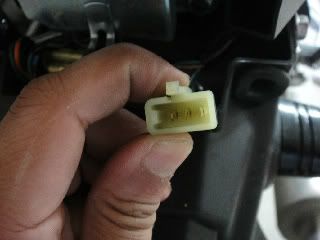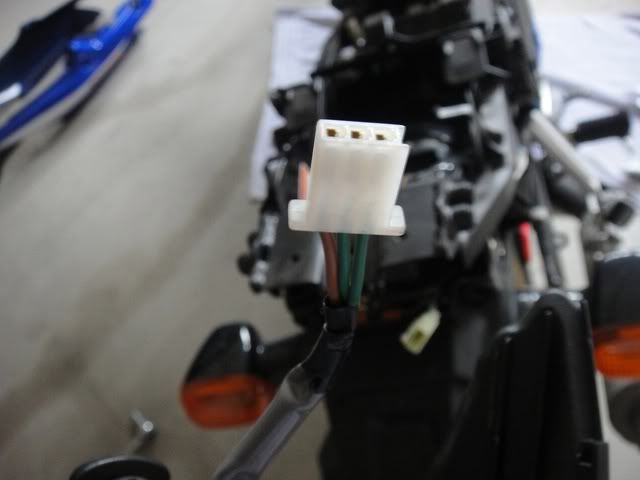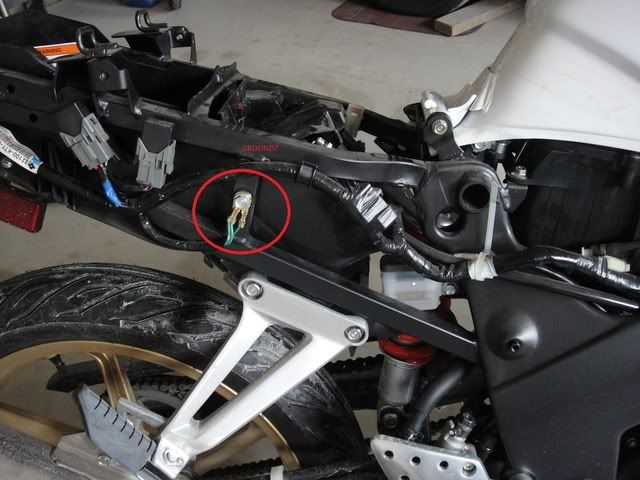BioRouge
Well-known member
ello,
I'm a little lost with the wiring - first time trying this sort of thing.
Heck its my first time opening up a bike period. After a few beers, decided to open up the fairings, remove the seat and check out the wiring. Did a bit of research on this form and online before i touched anything.
This is what I have in mind:
I was going to mount a Standard Aux power outlett from crappy tire. in my trunk just behind the battery firewall and run the power cables as well as my GPS power cord through a small hole to the right (ill drill one out) - see image below.

My understanding is that the power unit needs to be grounded (black wire?) and needs a power source (red wire?). If i use the battery directly, won't this thing just continue draining power if the bike is turned off?
I thought it might be a good idea to wire it with the brake light (always on if the bike is turned on). So i opened up the light assembly to see how that was connected.
Wiring Harness from bike to tail light:


Wiring Harness from tail light:

Is there some sort of a Y splitter that i can get to use with this harness? I'd hate to modify the stock wiring for this in case i ever do any mods to the tail lights...
Which one of the wires (green, green/yellow, brown) is the power and do i need any inline resistors?
I also saw this on the side - i'm assuming its a ground. Can I use this to ground the aux power unit?

Any help is always appreciated
I'm a little lost with the wiring - first time trying this sort of thing.
Heck its my first time opening up a bike period. After a few beers, decided to open up the fairings, remove the seat and check out the wiring. Did a bit of research on this form and online before i touched anything.
This is what I have in mind:
I was going to mount a Standard Aux power outlett from crappy tire. in my trunk just behind the battery firewall and run the power cables as well as my GPS power cord through a small hole to the right (ill drill one out) - see image below.

My understanding is that the power unit needs to be grounded (black wire?) and needs a power source (red wire?). If i use the battery directly, won't this thing just continue draining power if the bike is turned off?
I thought it might be a good idea to wire it with the brake light (always on if the bike is turned on). So i opened up the light assembly to see how that was connected.
Wiring Harness from bike to tail light:


Wiring Harness from tail light:

Is there some sort of a Y splitter that i can get to use with this harness? I'd hate to modify the stock wiring for this in case i ever do any mods to the tail lights...
Which one of the wires (green, green/yellow, brown) is the power and do i need any inline resistors?
I also saw this on the side - i'm assuming its a ground. Can I use this to ground the aux power unit?

Any help is always appreciated
Last edited:

